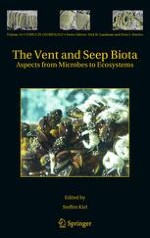2010 | OriginalPaper | Buchkapitel
12. Japan: Vents and Seeps in Close Proximity
verfasst von : Hiromi Watanabe, Katsunori Fujikura, Shigeaki Kojima, Jun-Ichi Miyazaki, Yoshihiro Fujiwara
Erschienen in: The Vent and Seep Biota
Verlag: Springer Netherlands
Aktivieren Sie unsere intelligente Suche, um passende Fachinhalte oder Patente zu finden.
Wählen Sie Textabschnitte aus um mit Künstlicher Intelligenz passenden Patente zu finden. powered by
Markieren Sie Textabschnitte, um KI-gestützt weitere passende Inhalte zu finden. powered by
